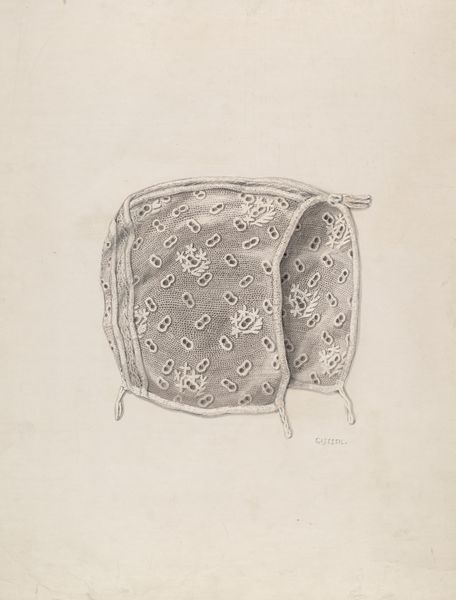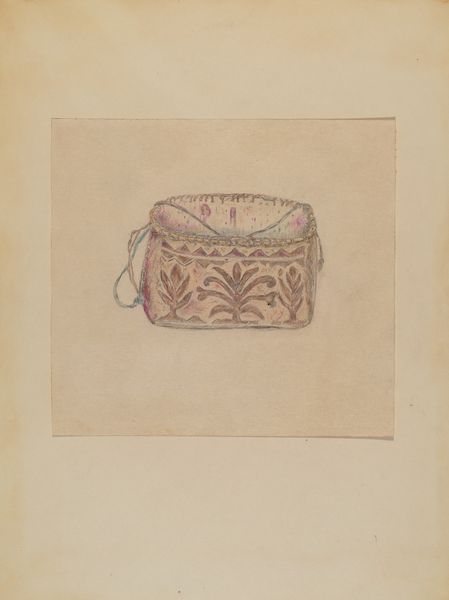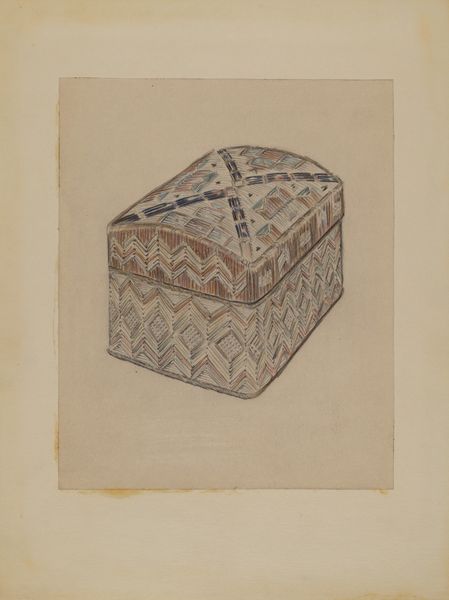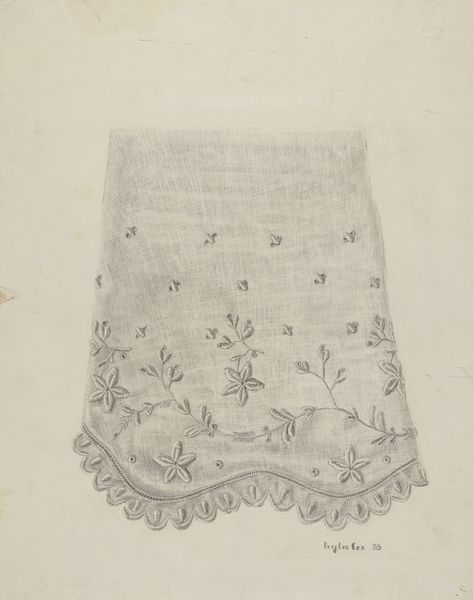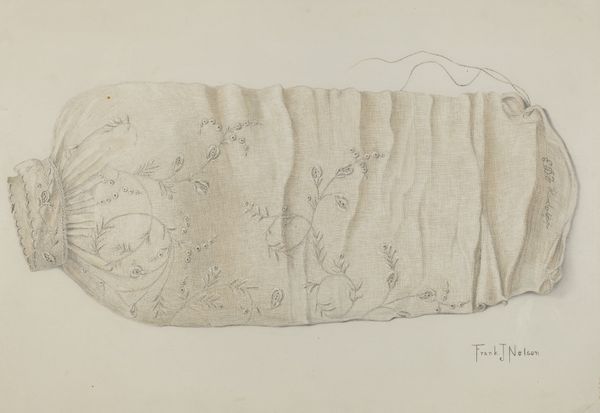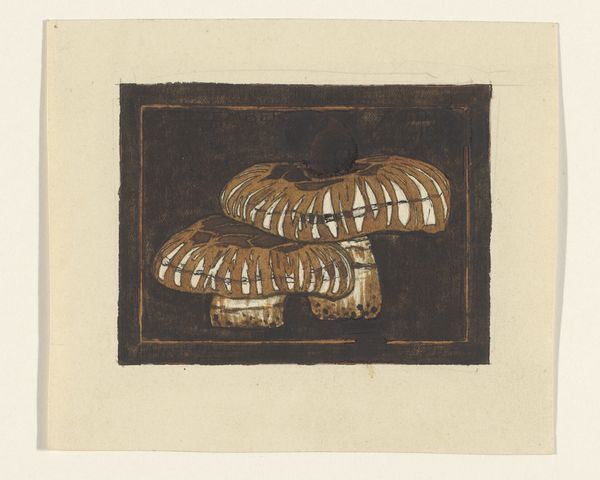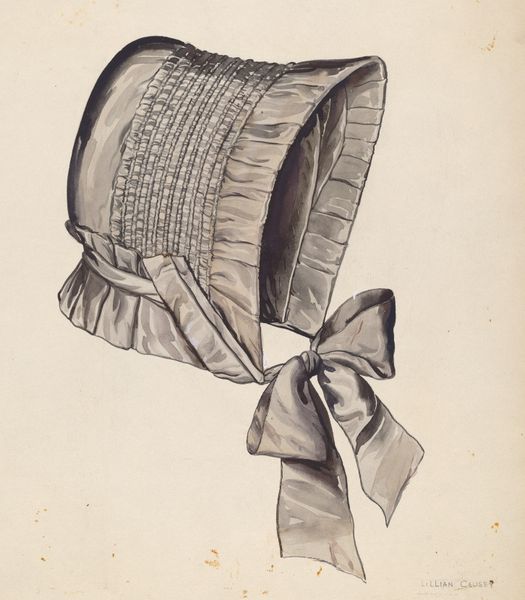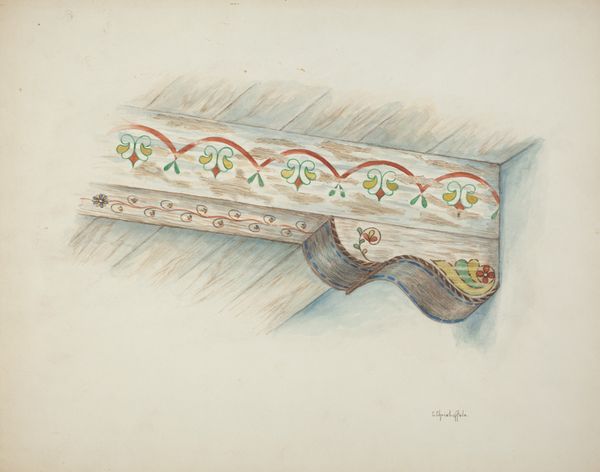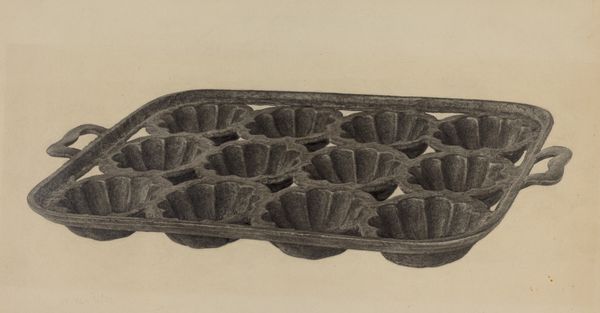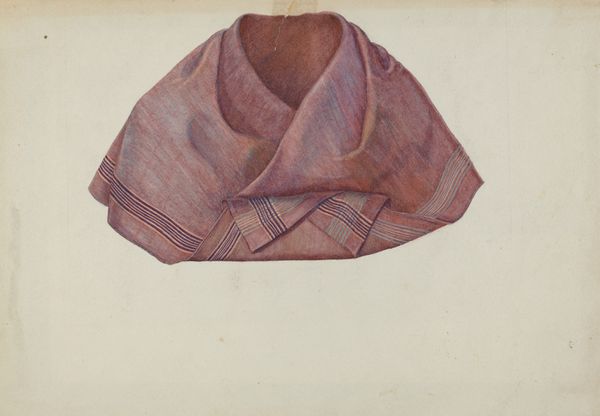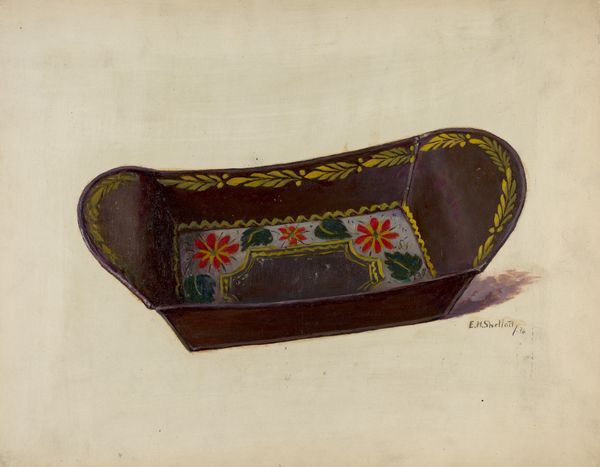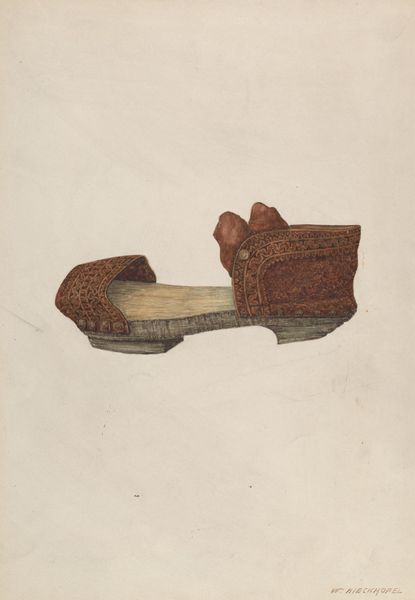
drawing, watercolor
#
drawing
#
figuration
#
watercolor
#
modernism
#
watercolor
Dimensions: overall: 22.9 x 28.1 cm (9 x 11 1/16 in.)
Copyright: National Gallery of Art: CC0 1.0
Curator: At first glance, it’s a muted watercolor and drawing of what looks like a lingerie sachet, dated circa 1937. I’m drawn to the ribbon details. Editor: It’s delicate, almost whisper-like. The lacy textures evoke a sense of privacy, hinting at the hidden world of undergarments, while the colors, although faded, hint at warmth and intimacy. It’s interesting how it presents this artifact of femininity. Curator: Indeed. It allows us to examine the social construction of femininity in the 1930s, right? This sachet, intended for something as intimate as a corset cover, speaks volumes about societal expectations around women’s roles and appearance at the time. Consider the decorative elements—lace, ribbons, and the subtle floral patterns. Editor: And aren't those decorative touches revealing of cultural values? The lace, for example, is so loaded—it's an enduring symbol of refinement, luxury, and feminine allure. The eyelets give a feeling of air, breathability, and softness to the undergarment that carries with it a notion of hygiene and good health that would be in accord with cultural zeitgeist of the period. This echoes back through many other eras as well. Curator: Absolutely. Corsets, and by extension the corset cover and this sachet, enforced a certain silhouette, dictating posture and even breathing. I wonder to what degree these undergarments represented restriction versus empowerment for women of that era? It also hints at the labor involved in creating such delicate objects. Editor: Right, while these garments concealed, they also visually communicated something to the viewer. There's almost a paradoxical dialogue embedded within the object itself - simultaneously hidden yet conspicuously crafted to telegraph this aesthetic of demure gentility. Curator: Perhaps that duality reflects the tightrope women had to walk. Displaying this artwork prompts a broader reflection on historical notions of femininity and their continued impact. Editor: Yes. The very preservation of an object like this becomes symbolic in itself, reflecting values regarding heritage, domesticity and how such values intertwine. A very tender artwork indeed.
Comments
No comments
Be the first to comment and join the conversation on the ultimate creative platform.
